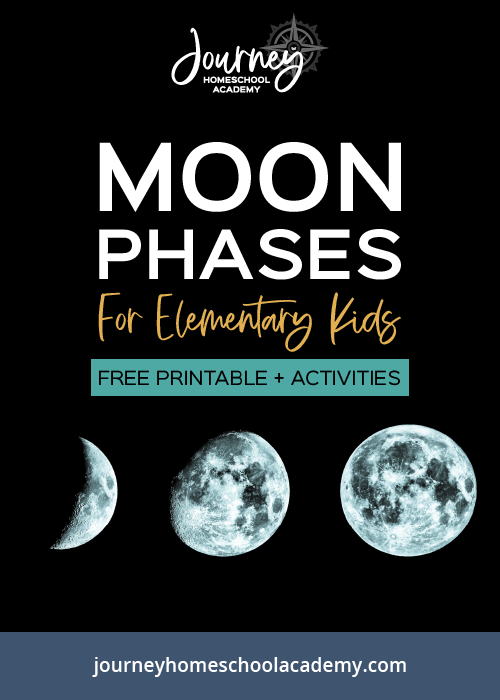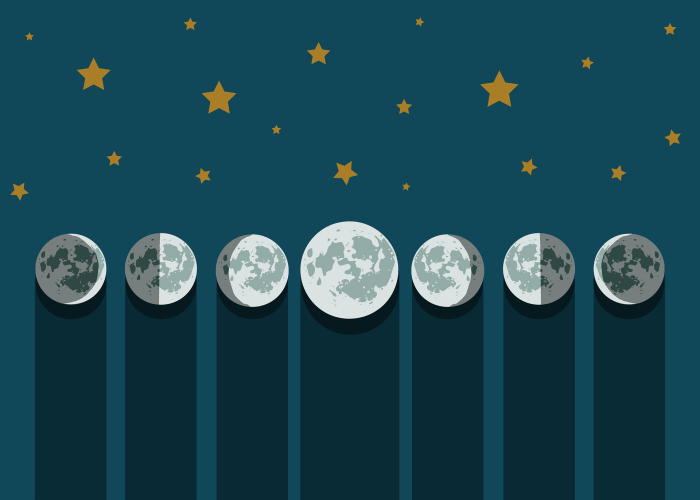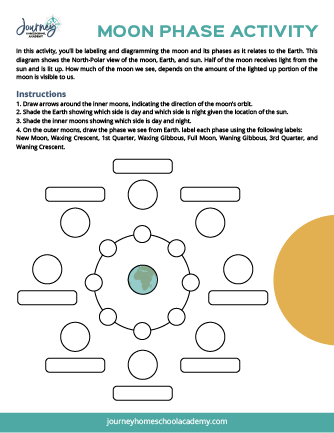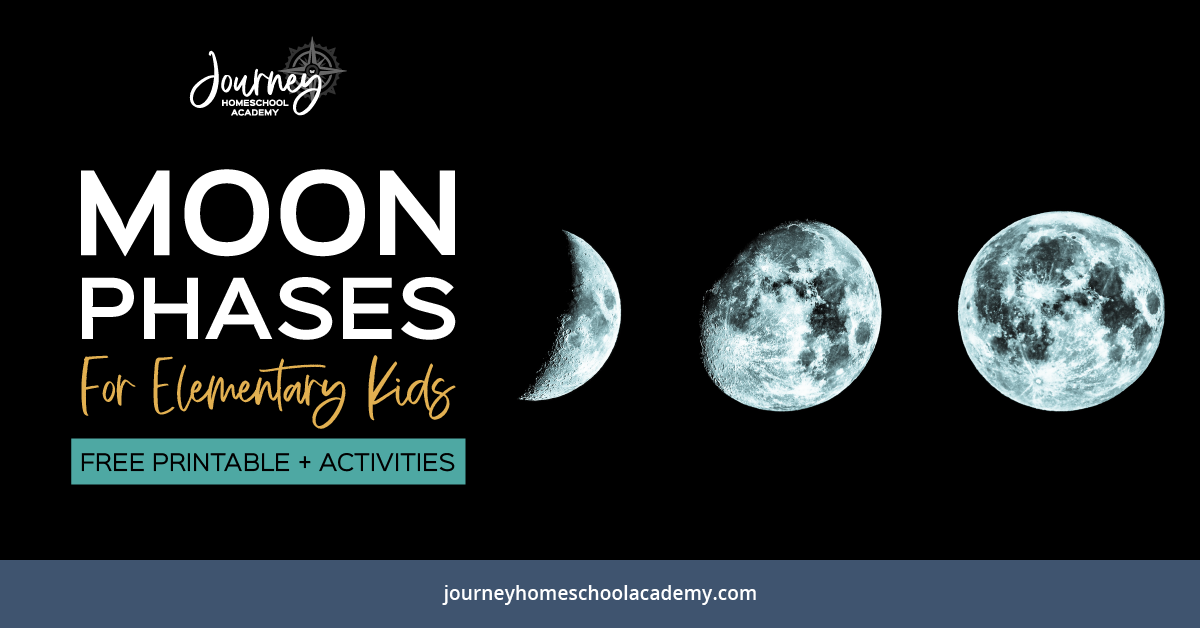Kids have a tendency to be fascinated with the moon. The moon is visible almost every single night (except the most cloud-covered nights)… and then it just disappears!
It seems to follow you as you drive. Sometimes the moon even makes a daytime appearance!
Sometimes the night-to-night changes are barely enough to be noticeable, but most kids eventually notice that sometimes the moon appears to be huge, while other nights reveal only a sliver.
Elementary kids’ natural fascination with the moon provides a great segue to teach them about the moon’s various phases! Let’s take a look at a few simple ways to teach moon phases to elementary kids including a free video lesson and printable!

A Moon Phases Science Experiment
Good Friday is a great opportunity to talk to your kids about solar eclipses and moon phases. Over at Intoxicated on Life, we have a moon phase science experiment that’s easy to perform and engages your kids’ imaginations! All you need is a styrofoam ball, a very dark room, a pencil, and a lamp!
A Simulation of Various Moon Phases
PBS Learning Media’s website has a free simulation of various phases of the moon. This interactive platform allows users to adjust the time or the position of the earth to see how the moon appears to change throughout its phases.

Memorize a Few Quick Facts About the Moon!
One of the best things about teaching elementary kids is how quickly they learn information and how well they retain it. While they’re showing an interest in the moon, you can have them memorize some facts that they can carry throughout life with them! Below are just a few fun facts. Help your kids do their own research to find more facts that interest them.
- It takes 29.5 days for the moon to orbit once around the earth. This is called a lunar month.
- A new moon occurs when the moon is just above or below the sun in the sky. You can’t see the portion of the moon being lit up by the sun during a new moon.
- When you can see half of the moon, this is actually referred to as a “quarter moon.” That’s because it’s one-quarter of the way around the sky.
- A lunar eclipse happens when the earth’s shadow covers the moon. That can only happen during a full moon.
- A crescent moon occurs when you can only see a little bit of one side of the moon.
- A full moon means you can see the entire lighted side of the moon.
- A blue moon happens when there is a second blue moon in one calendar month.
Free Moon Phases for Elementary Kids Lesson & Printable!

Journey Homeschool Academy would love to share a free video lesson and printable with you to help teach your young children about the various phases of the moon. Enter your email address below to get access to this free resource! You’ll be redirected to a page with a video lesson and printable when you click submit.

